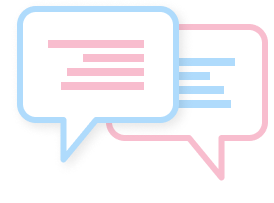The Internet of Things (IoT, Internet of Things) is shaping the industrial and consumer world. Smart technologies continue to permeate all layers of the business and consumer sectors, from businesses to health, through finance or logistics, and every missed opportunity that a competitor strategically takes becomes virtually a long-term mistake for those companies that do not innovate. 2020 is going to be a key year for the 4 components of the IoT model: Sensors, Networks (Communications), Analytics (the cloud) and Applications.
Some studies estimate the impact of advances in IoT technologies at an additional $ 344,000 million in terms of revenue and about $ 177 billion in cost savings. The IoT and smart devices are already helping to improve the performance metrics of the main factories located on US soil. They are in the hands of employees, facilitating routine management tasks and triggering productivity rates around 40 and 60%.
The next 10 trends explore the impact of many technologies on IoT and shed light on the future of IoT.
GROWTH IN DATA AND DEVICES WITH MORE HUMAN-DEVICE INTERACTION.
At the end of 2019, there will be about 3600 million devices actively connected to the internet and used in daily tasks. The arrival of 5G will help open the door to many more devices and an infinitely larger volume of data traffic. In addition, the increasing pace of adoption of peripheral computing devices (edge computing) will allow companies to process data much faster and closer to the action points.
ARTIFICIAL INTELLIGENCE, KEY IN IOT (AGAIN)
To get the most out of the data, or even to understand at a basic level how modern infrastructures work, it is essential to assist computer systems with artificial intelligence capabilities. Large cloud service providers, such as Amazon, Microsoft, and Google, will be increasingly committed to developing their artificial intelligence capabilities as a competitive tool.
There are more and more startups trying to expand their market share through artificial intelligence algorithms capable of taking advantage of the possibilities offered by machine learning and deep learning technologies to better take advantage of the growing volume of data to which they have access.
Artificial intelligence is the fundamental ingredient to digest this huge amount of data available today and allow companies to extract all the value they hold. Artificial intelligence will contribute to the analysis of IoT data in the following areas: data preparation, data discovery, data visualization, the precision of time series of data, predictive and advanced analytics, real-time geospatial location (logistic data).
VUI: VOICE USER INTERFACE (VOICE USER INTERFACE) WILL BE A REALITY
The sector giants compete to ensure a dominant position in the emerging IoT market. Digital assistants, such as HomePod, Alexa, Siri, and Google Assistant, are the technological platforms on which the next batch of smart devices will be developed and these companies strive to gain a place in the day-to-day life of consumers, which will allow them to continue incorporating devices into their lives in a comfortable and simple way.
The voice represents 80% of our daily communications. As in science fiction movies, talking with robots is the most normal way to communicate with them. The use of voice to configure devices, modify our preferences, execute commands and receive results will become the norm, not only in smart homes and factories but in the applications that incorporate our cars and wearables.
MORE INVESTMENTS IN IOT
Attracted by the undisputed impact of IoT, venture capitalists continue to be seduced by innovative hardware, software and services projects. IoT spending is expected to reach $ 1.4 trillion in 2021.
The IoT is one of the few markets that is equally attractive to both traditional venture capital funds and others of more recent creation. As smart devices are making a dent in our lives and we delegate more and more tasks to them, it will continue to increase the attractiveness of IoT startups as an investment destination.
Clients will continue to place high expectations on the following innovations in IoT – such as smart mirrors capable of analyzing our face, detecting if we are sick and calling the doctor, a smart cashier with smart security cameras, smart holders able to tell you what to eat and how to eat it, smart beds that turn off the lights when it detects that its occupants have fallen asleep.
FINALLY, THE REAL EXPANSION OF THE SMALL IOT
Connectivity and processing capacity are key to the Internet of Things. Its peak work will be smart cities, although its development seems to be going through a stagnation stage. Smart sensors will record all the activity that takes place at street level in a given neighborhood: from pedestrianized routes to the use of shared cars, and the selection of temperatures 24 hours a day, seven days a week, to create a comfortable, safe and clean environment for those who live in them.
As soon as the model is perfected, it could be used as a template to develop other smart neighborhoods, and, ultimately, smart cities.
The potential benefits for cities, however, make the Internet of Things a really interesting technology. Cities of all sizes are investigating how to increase levels of efficiency and safety by taking advantage of these new technologies as they deploy the necessary infrastructure to support it.
One of the engines of this change will be transported: it has been shown that the incorporation of connectivity, intelligence and automation capabilities to roads significantly increases its efficiency and the experience of its users. A factor called to be key in the development of smart cities will be 5G, which will allow almost instantaneous transmission of analytical data flows.
In the automobile sector, the arrival of the Internet of Things will also mean a real revolution, which will result in the progressive incorporation of autonomous vehicles into the urban landscape. Nowadays many models already bring connected applications capable of diagnosing the condition of cars. And this is possible thanks to the IoT technologies implemented in connected vehicles.
But this diagnostic capability will not be the only IoT advance that will be generalized throughout the coming year. Connected applications, voice searches, and updated traffic status information will be other advances that will change the way we drive.
THE RISE OF INDUSTRIAL IOT AND DIGITAL TWIN TECHNOLOGIES
Of all the amalgam of technologies that are driving the new techno-industrial revolution, IoT is helping to make a qualitative leap in the levels of efficiency, safety, and profitability of manufacturing processes. Industrial IoT offers higher levels of efficiency and productivity through data integration and analysis in a way that is impossible without interconnected manufacturing processes.
Another technology that is booming is that of “digital twins”, which allows organizations to simulate in a reliable way how their IoT devices interact in production processes and access information on the operation of the life cycle of their machines. This way they can anticipate changes before they are imminent. According to a Gartner survey, 48% of manufacturers that have adopted smart technologies have drawn up plans to use the concept of the digital twin.
ADVANCES IN PERIPHERAL COMPUTING (EDGE COMPUTING)
Peripheral computing, or edge computing, is a technology that distributes the processing load to the last nodes of a digital network (sensors in the case of IoT). The use of computing type poses very attractive advantages for IoT solution providers. For example, they allow minimizing latency and preserving network bandwidth, operating reliably accelerating decision making, capturing and protecting a large number and types of data, and transferring data to the most appropriate place for processing. , with a better analysis of local data.
Edge computing technologies have been booming for several years, but the scope of IoT technology is accelerating its take-off process. As for the factors that are driving this change, two stand out:
- The fall in prices of peripheral devices with increasing processing capacity.
- The growing workload that centralized infrastructures support.
Peripheral computing technology also makes the arrival of artificial intelligence to devices much more feasible, as it allows companies to take advantage of their data series in real-time instead of having to work with terabytes of data in the central repositories in the Real-time cloud. Over the next few years, or even decades, it is possible for technology to evolve to find a point of balance between the cloud and more powerful distributed peripheral devices.
Software manufacturers are developing specific, more robust and secure infrastructures, and security solution providers will begin to incorporate security solutions for peripheral components into their current service offering to prevent data loss, offer network health diagnostics and Threat protection, including user control with privileges and application permissions to assist in the adoption of such technologies in companies.
INCREASE SECURITY THROUGH BLOCKCHAIN
As new threats begin to emerge, security will become a priority in the IoT technology market. The complexity of the threats derives from the heterogeneous and distributed nature of the technology. There are already more than 26,000 million devices connected to the internet. Unauthorized access to the Internet of Things devices and networks will be much more frequent in 2020 and it will be the network operators who will have to start stopping the intruders.
The current centralized architecture of the Internet of Things is one of the main causes of the vulnerability of IoT networks. With billions of connected devices, and with millions more to come, the IoT is a perfect target for cybercrime. And that is why security will become an increasingly relevant factor.
Blockchain offers new hopes for IoT security, for different reasons. First, it is a public technology. Everyone who participates in the network of blockchain network nodes can view and validate all the blocks and transactions stored in it.
In addition, it also allows users to control their transactions using keys. Second, the blockchain network is decentralized, so there is no single authority that can approve transactions by eliminating the weakness of the Single Point of Failure (SPOF, or single point of failure). Third, perhaps the most important aspect: it is a secure technology, the database can only be expanded, and previous records cannot be changed.
In the coming years, manufacturers will recognize the advantages of incorporating distributed registration technology into their devices, and of certifying their devices as “Blockchain Certified”.
MORE SOCIAL, LEGAL AND ETHICAL CONSIDERATIONS
IoT devices are the product of a new technology that is not subject to any type of regulation. The IoT of things is going to have to face the new social and legal dilemmas that are going to arise in the near future. One aspect that will require special attention is that related to the data that these devices record, which could shortly be covered under the umbrella of the General Data Protection Regulation (GDPR).
As regards the management of personal data and privacy, the GDPR extends its reach beyond the confines of the European Union. Any company that aspires to operate in the European market is obliged to observe the guidelines established in the 88 pages of document extension. Security considerations are key from the point of view of the legal ordering of personal data.
Development teams can guarantee the required level of security and compliance at different levels, including data encryption, active consent, and various verification doctors as well as other mechanisms. Its objective will be to ensure that the data registration is carried out legally.
STANDARDIZATION, A PROBLEM THAT PERSISTS
Standardization is one of the main pitfalls that the Internet of Things is going to face – especially now that the giants of the sector are immersed in a battle to secure a dominant position in this emerging market. This competition is causing its fragmentation.
One possible solution is to limit the number of dominant suppliers in the market, so that customers can choose one and make sure that all connected devices that they purchase later are compatible with it, in a manner analogous to what happens in the case of operating systems, with Windows, Mac, and Linux and without cross-cutting standards between platforms.
To understand the problem posed by standardization, the three categories of the standardization process must be taken into account: Platform, connectivity, and applications. In the case of the platform, it is about the experience and interface of users and analytical tools, while connectivity refers to the customer’s points of contact with the devices.
Finally, applications are the software that controls, collects and analyzes data. These three categories are interrelated and are all essential. If one fails, the model as a whole fails, which leads to the slowdown of the standardization process.
Also Read
Top 10 IoT Development Company in Chicago
Top 10 IoT Development Company in The USA
Why We Are The Best IoT Development Company In Eastern Europe
How IoT is Reinventing Businesses Today?
What Is The Role Of Android In IoT?
Challenges of UX Design for IoT and Tips to Beat Them
Recent Articles
The Top 10 Successful App Developers...
Hiring an app developers company is no easy feat. In...
Top 10 Innovative Mobile App Developers...
San Francisco has an incredibly diverse and a magnificent tech...
Top 10 Most Trusted Mobile App...
Houston boasts of a splendid tech landscape that is mushrooming...






